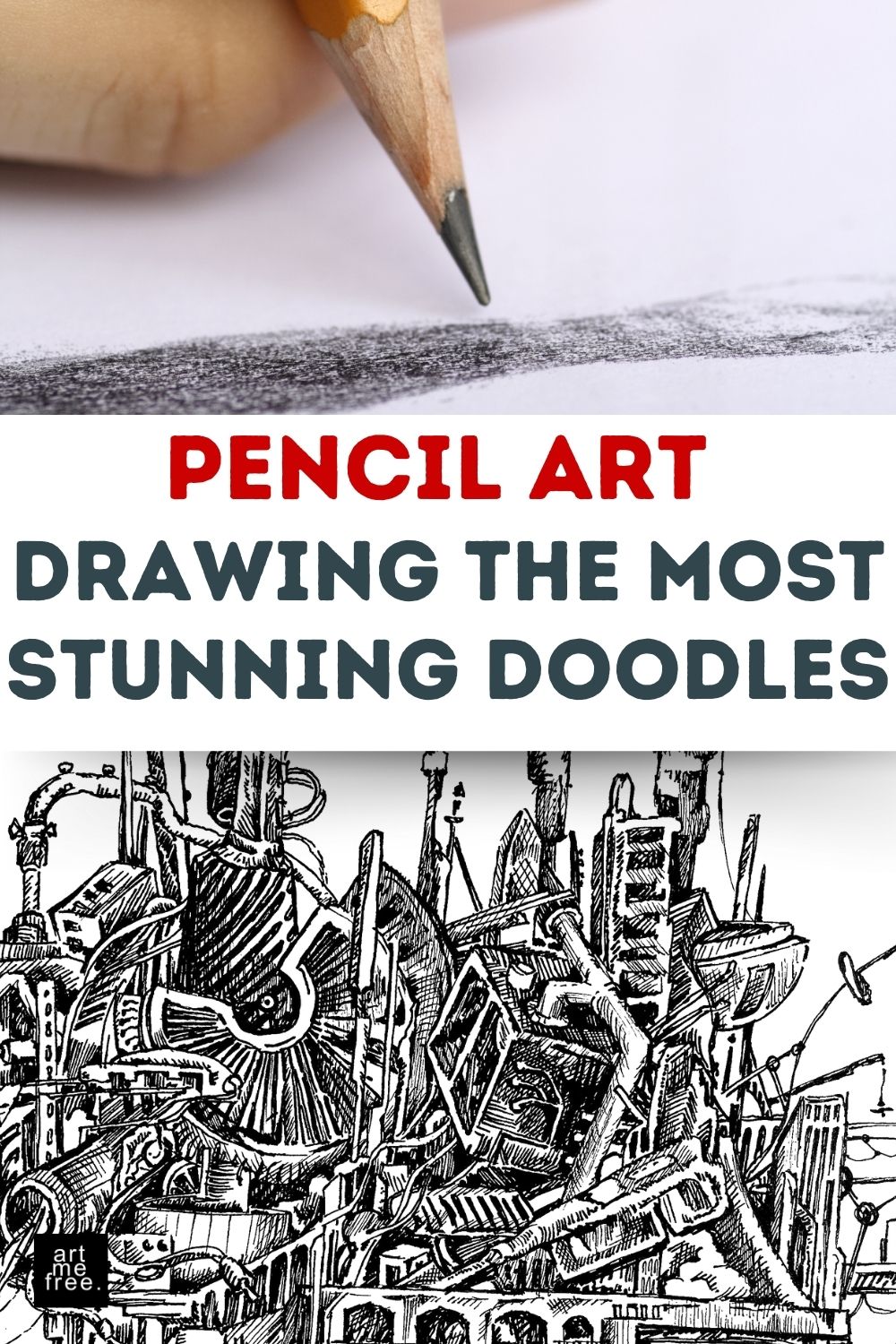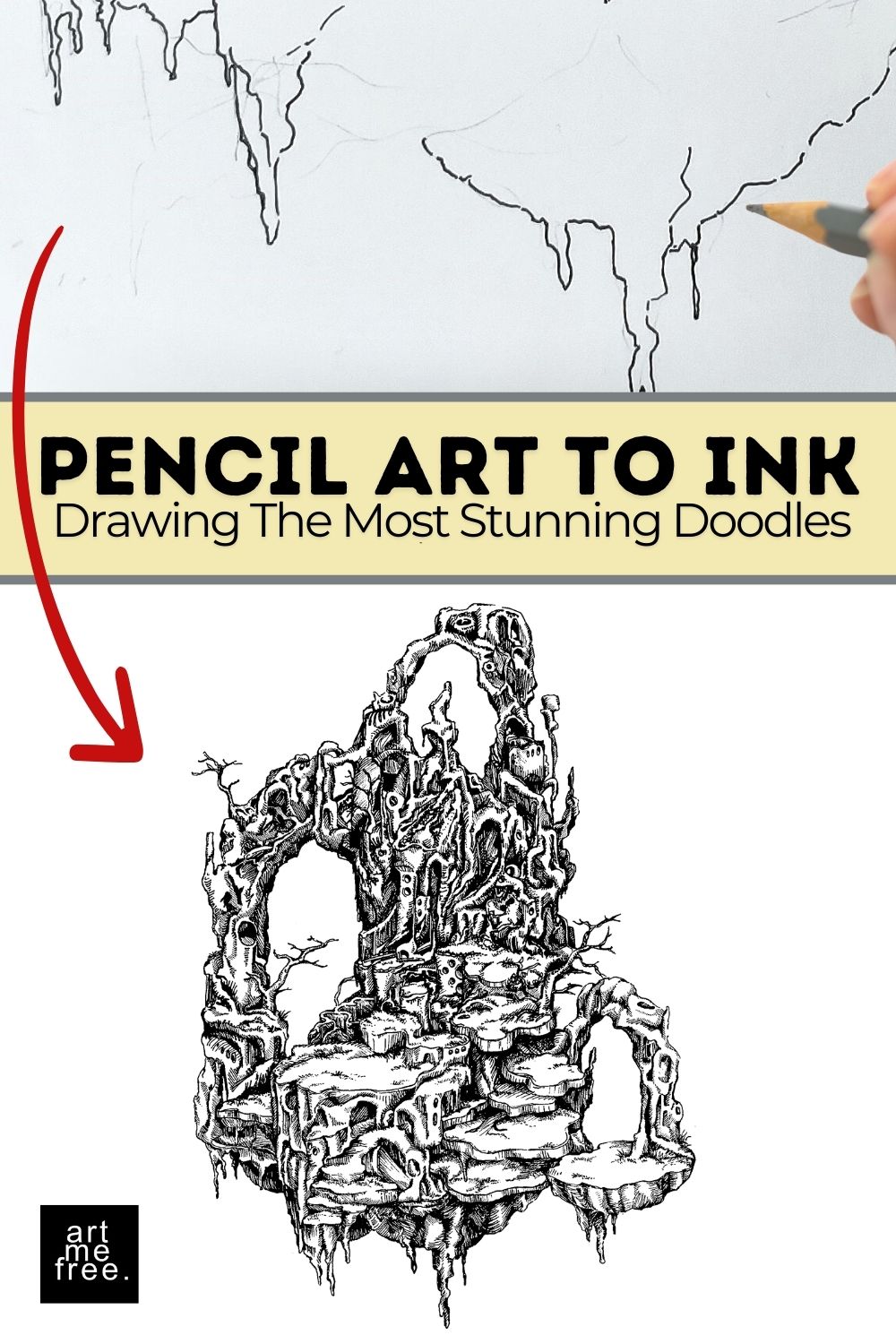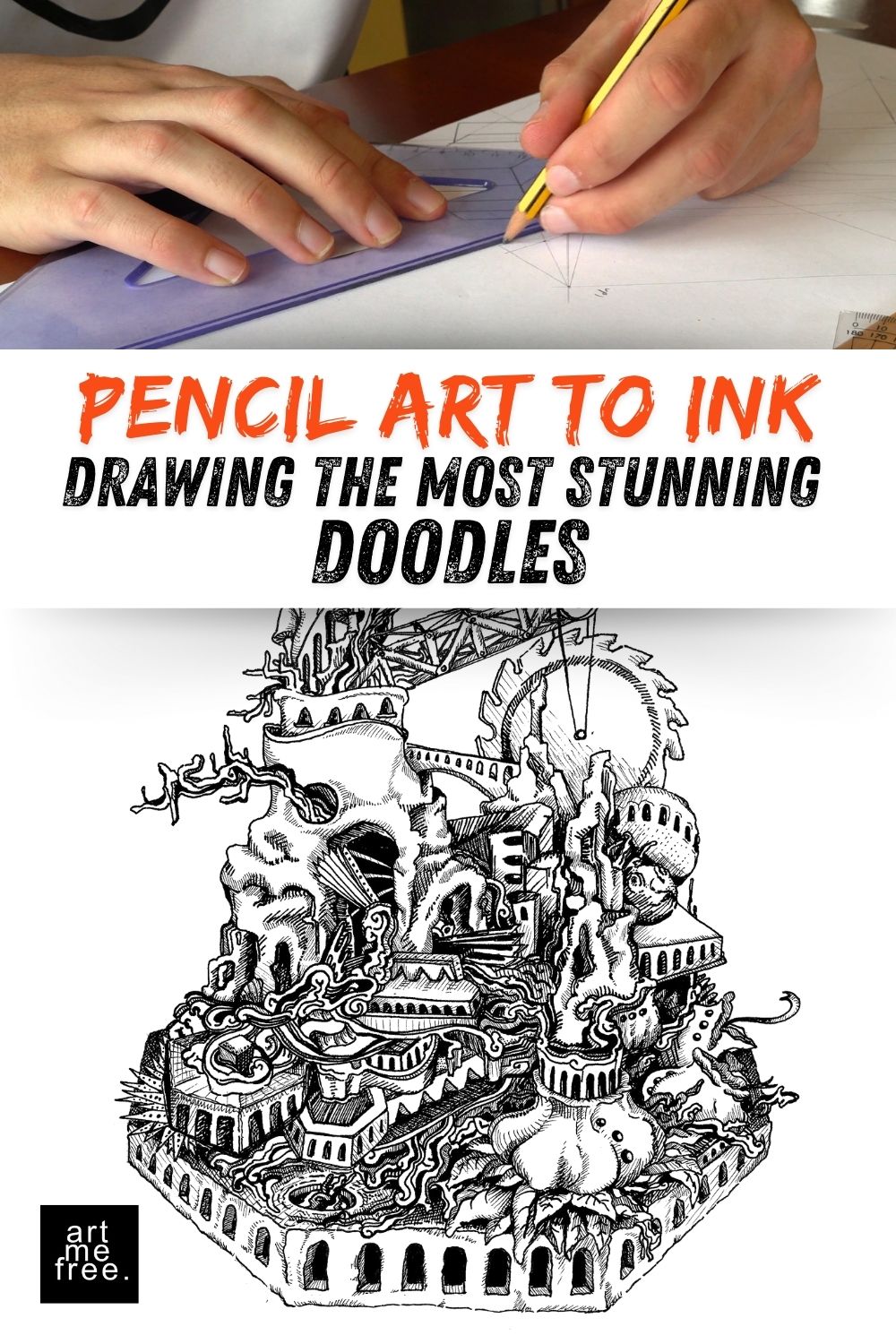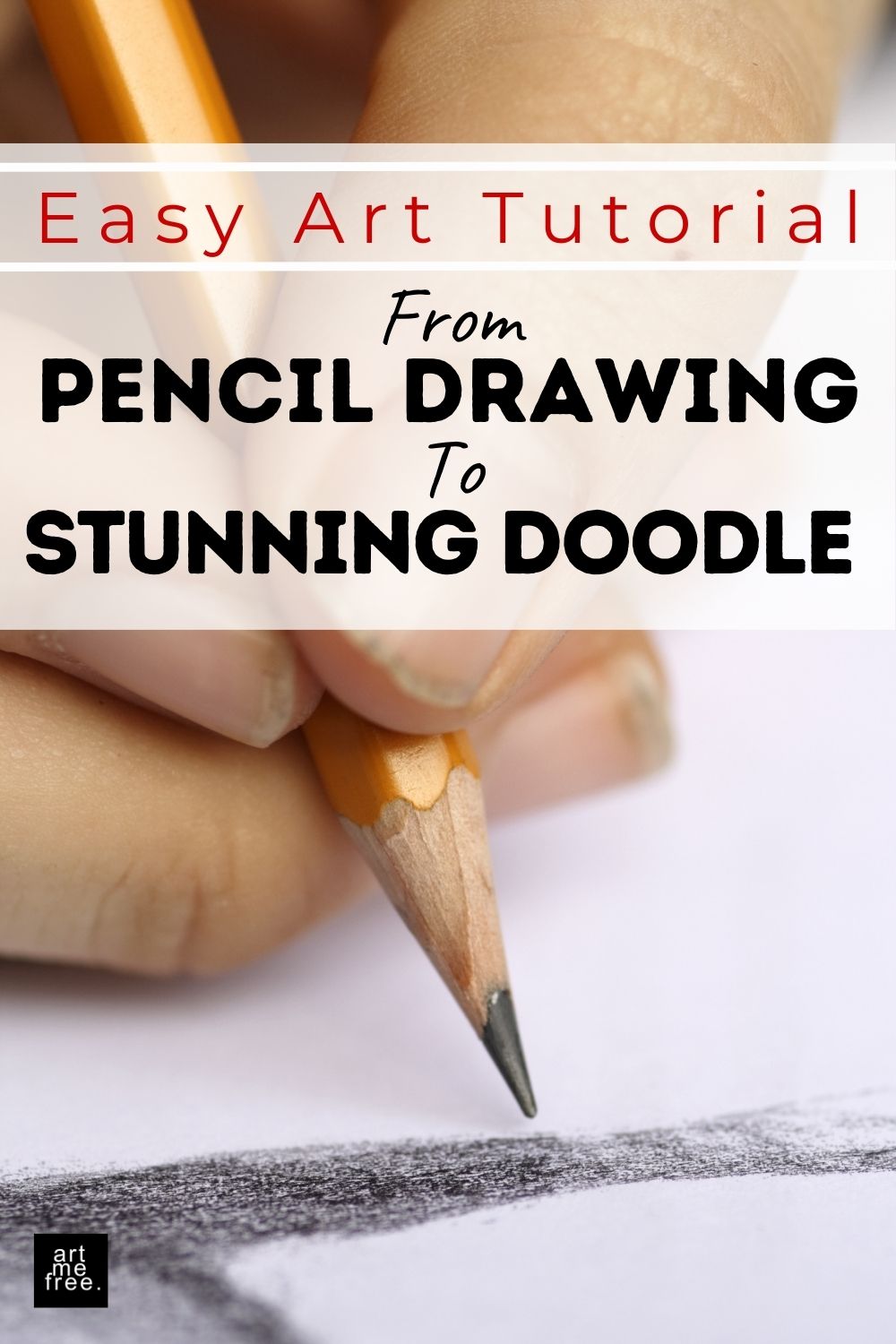
While I often dive straight into inking, starting with a pencil has its advantages.
Pencil sketches act as a roadmap, especially when creating intricate pieces. If you enjoy structure in your art, this approach can make the inking process smoother and more intentional.

Before starting your pencil art drawing, gather a few basic tools.
When creating layered or overlapping designs, pencil allows you to see which lines need to be inked and which should remain hidden. This is especially helpful when drawing objects that intersect.

Transitioning from pencil art drawing to ink is an exciting step. Here’s how to know when your sketch is ready.
Once you’re ready, grab a black pen and start tracing over your pencil lines.
Begin with the main outlines before adding finer details. This prevents smudging and allows for better control.
Even if you usually draw directly with ink, pencil can be useful later in the process, too.
I often use pencil at these later stages when I want to experiment without risking the final look. It’s a simple but effective way to keep creativity flowing without hesitation.

Whether you start with pencil or go straight to ink, perfection isn’t the goal—creativity is.
At artmefree, I’ve learned that embracing mistakes leads to more interesting and unique designs. If you struggle with perfectionism, check out my post: 5 Reasons Perfection in Art Is Overrated.
Your art doesn’t need to be flawless—it just needs to be yours.
Pencil art drawing is a valuable tool for both beginners and experienced artists. While I often jump straight into inking, I recognize the benefits of starting with pencil—especially for planning, layering, and problem-solving.
Whether you prefer sketching first or diving right into ink, the most important thing is to enjoy the process and let creativity guide you.
Try experimenting with pencil sketches before inking and see how it influences your drawing style. For more inspiration, check out other posts on artmefree and start exploring new techniques today.



To provide you with an optimal experience, we use technologies such as cookies to store and/or access device information. If you consent to these technologies, we may process data such as browsing behavior or unique IDs on this website. If you do not give or withdraw your consent, certain features and functions may be impaired.